Daily Accomplishment Report Samples
-
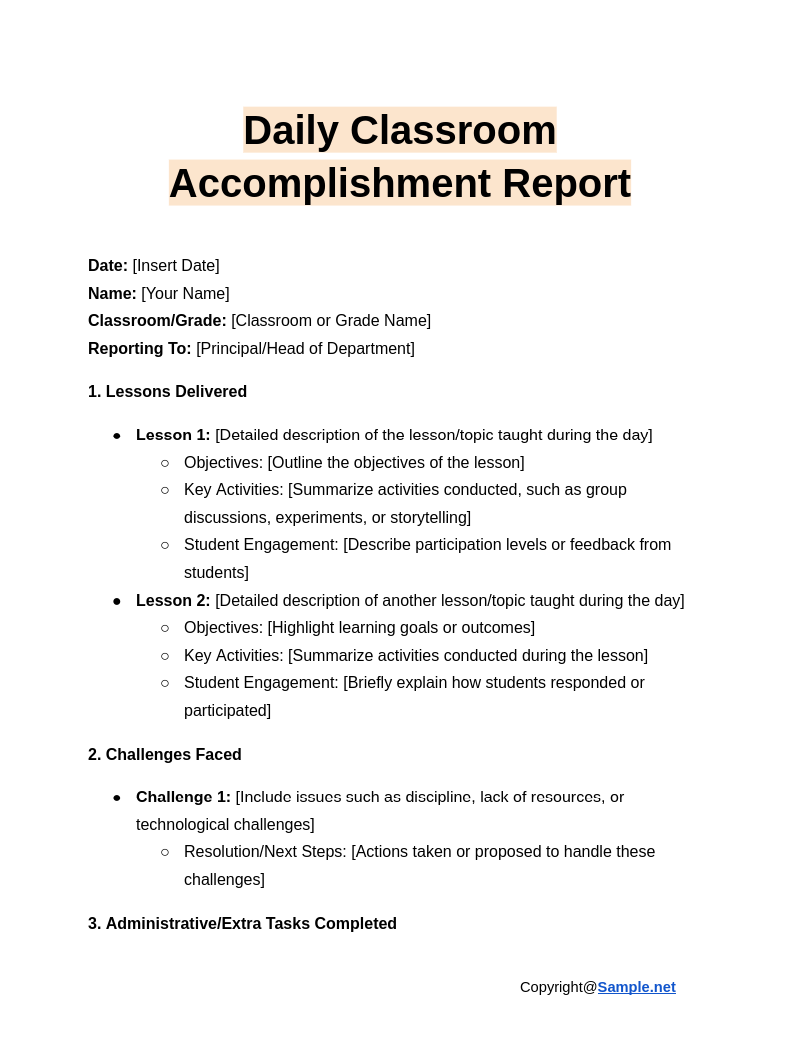
Daily Classroom Accomplishment Report
download now -
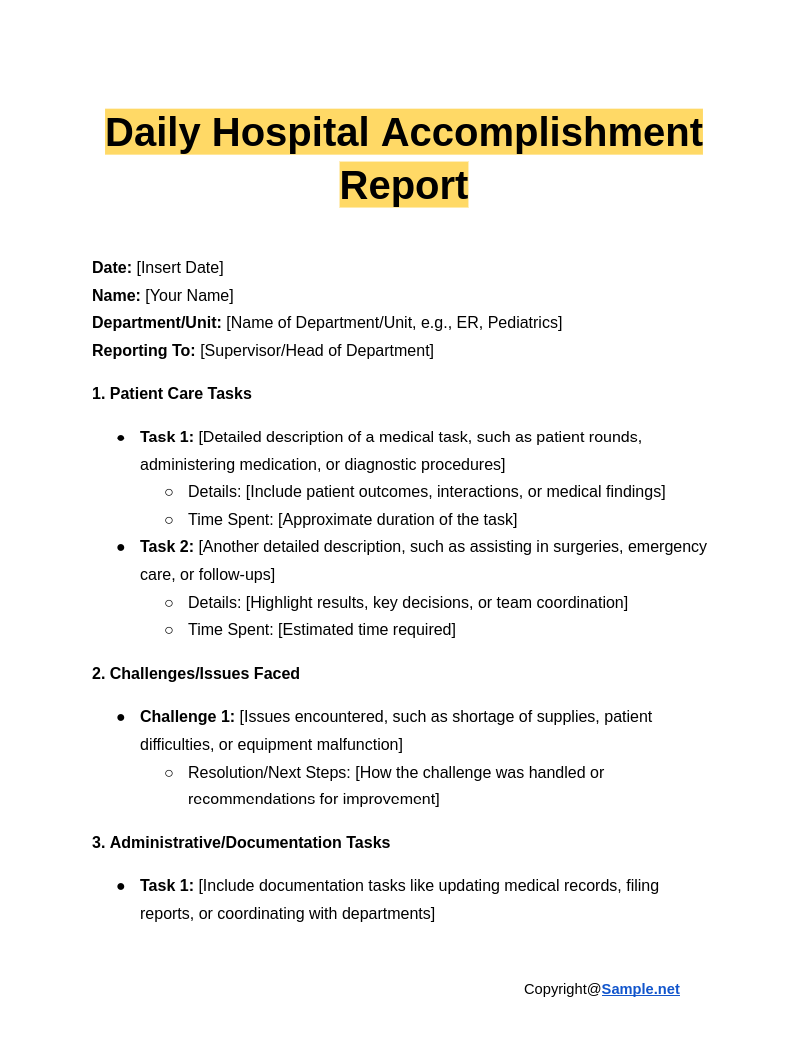
Daily Hospital Accomplishment Report
download now -
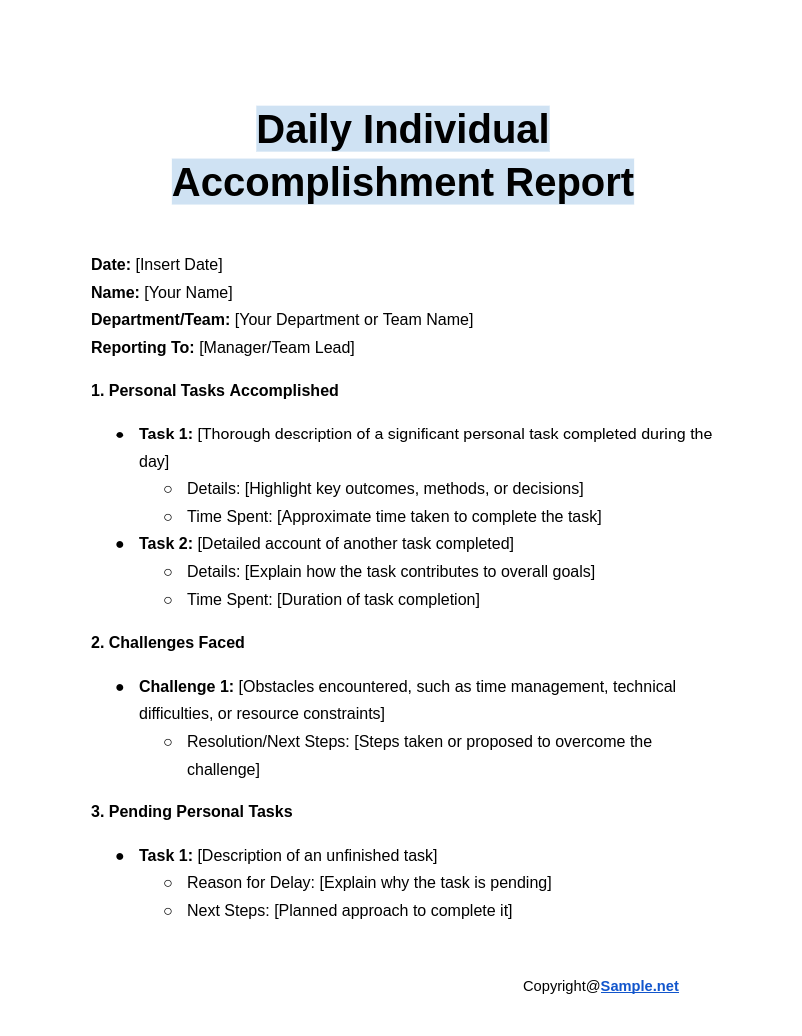
Daily Individual Accomplishment Report
download now -
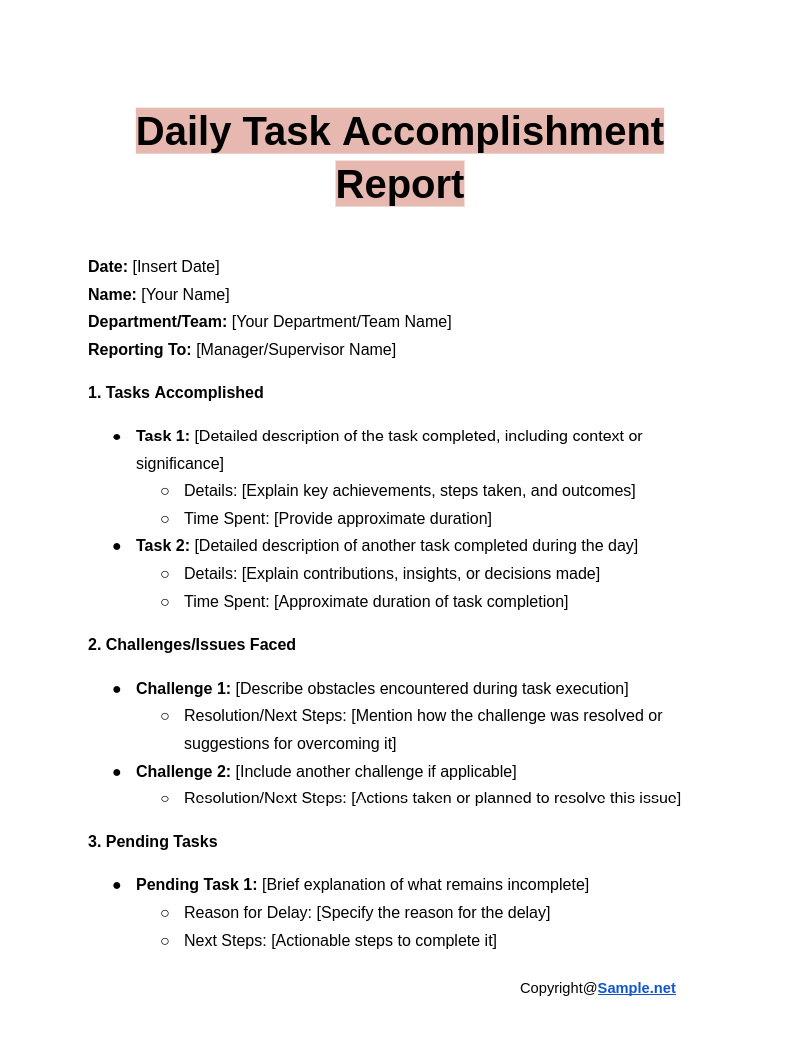
Daily Task Accomplishment Report
download now -
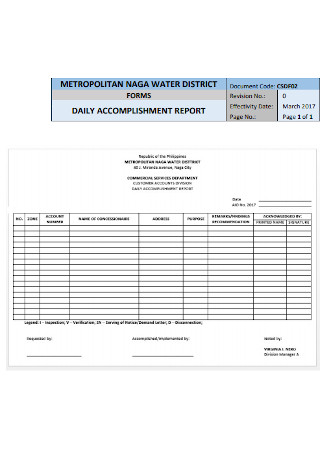
Sample Daily Accomplishment Report
download now -
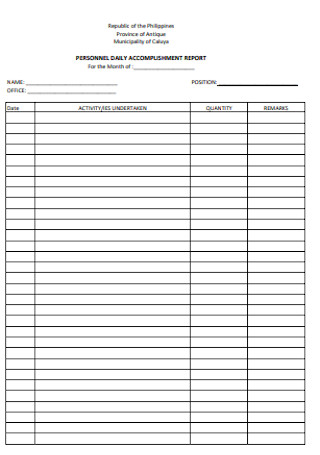
Personnel Daily Accomplishment Report
download now -
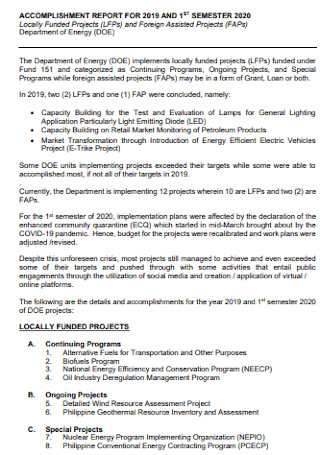
Basic Daily Accomplishment Report
download now -
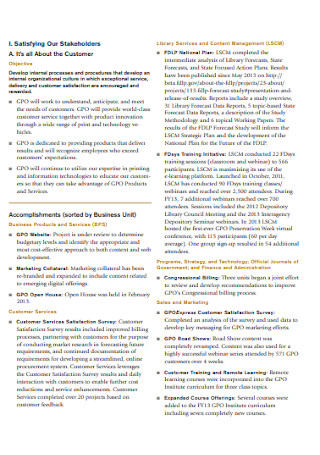
Daily Strategic Accomplishment Report
download now -
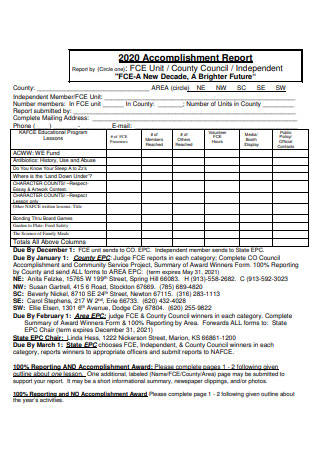
Simple Daily Accomplishment Report
download now -
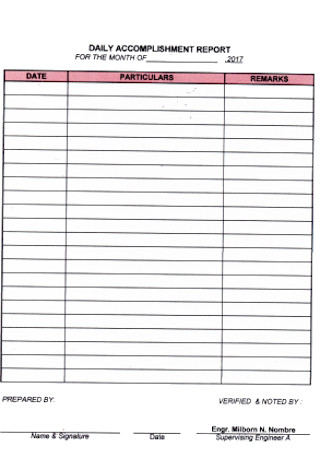
Simple Daily Accomplishment Report
download now -
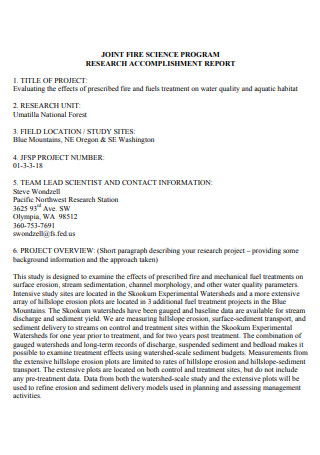
Daily Research Accomplishment Report
download now -
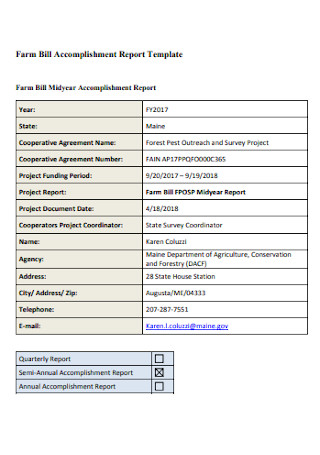
Farm Bill Daily Accomplishment Report
download now -
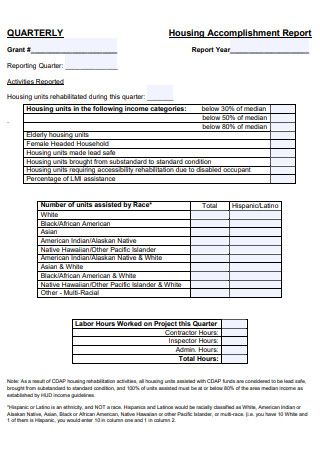
Daily Housing Accomplishment Report
download now
FREE Daily Accomplishment Report s to Download
Daily Accomplishment Report Format
Daily Accomplishment Report Samples
What is a Daily Accomplishment Report?
Basic Elements of an Daily Accomplishment Report
How to Create a Daily Accomplishment Report
FAQs
What are some examples of daily accomplishment reports?
What is the purpose of a daily accomplishment report?
What are the significant steps in writing a daily accomplishment report?
What is the difference
What challenges might arise when preparing these reports?
How are Daily Accomplishment Reports useful for managers?
How do you make a Daily Accomplishment Report more effective?
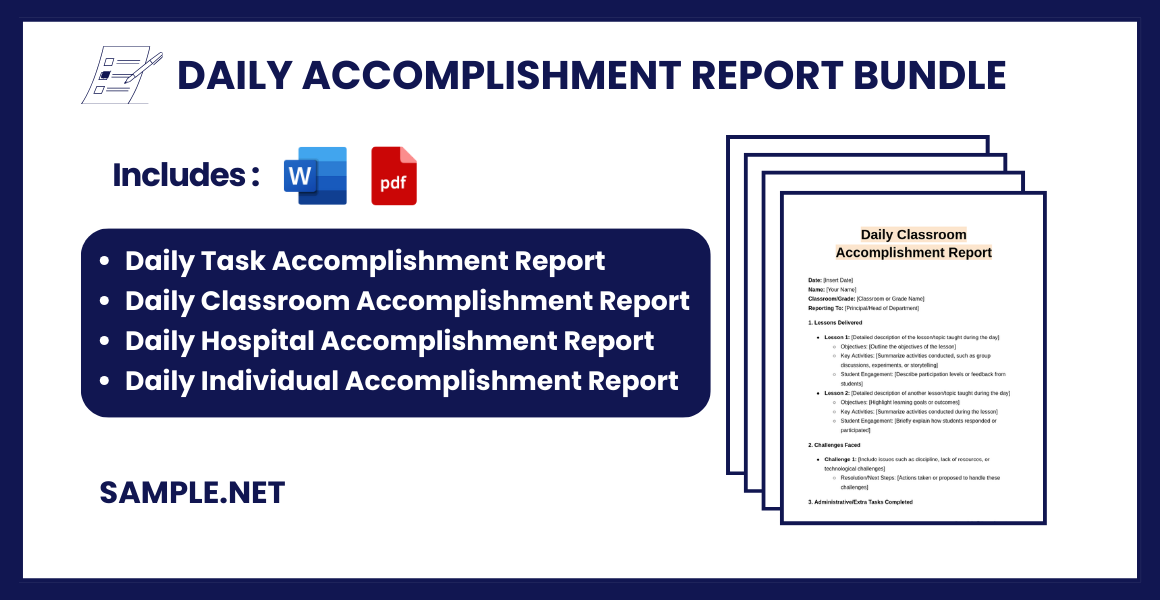
Download Daily Accomplishment Report Bundle
Daily Accomplishment Report Format
Date: [Insert Date]
Name: [Your Name]
Department/Team: [Your Department/Team Name]
Reporting To: [Manager/Supervisor Name]
1. Tasks Accomplished
- Task 1: [Brief description of the task]
- Details: [Key details of the task, progress, or results achieved]
- Time Spent: [Approximate duration]
- Task 2: [Brief description of the task]
- Details: [Key details of the task, progress, or results achieved]
- Time Spent: [Approximate duration]
- Task 3: [Brief description of the task]
- Details: [Key details of the task, progress, or results achieved]
- Time Spent: [Approximate duration]
2. Challenges/Issues Faced
- Issue 1: [Description of the challenge or obstacle encountered]
- Resolution/Next Steps: [What actions were taken or need to be taken]
- Issue 2: [Description of the challenge or obstacle encountered]
- Resolution/Next Steps: [What actions were taken or need to be taken]
3. Pending Tasks
- Task 1: [Brief description of the pending task]
- Reason for Delay: [Explanation of why it wasn’t completed]
- Next Steps: [Planned actions to complete this task]
- Task 2: [Brief description of the pending task]
- Reason for Delay: [Explanation of why it wasn’t completed]
- Next Steps: [Planned actions to complete this task]
4. Goals for the Next Day
- Goal 1: [Brief description of the task or goal]
- Goal 2: [Brief description of the task or goal]
- Goal 3: [Brief description of the task or goal]
5. Additional Notes/Comments
[Include any other relevant information, feedback, or observations here.]
What is a Daily Accomplishment Report?
A Daily Accomplishment Report is a structured summary of the tasks and objectives completed within a single workday. It outlines key achievements, challenges encountered, and ongoing tasks for future action. This report helps managers or supervisors evaluate daily productivity and ensures that employees remain aligned with organizational goals. It is widely used to promote accountability, improve communication, and provide clarity on work progress. You can also see more on Work Accomplishment Report.
Basic Elements of an Daily Accomplishment Report
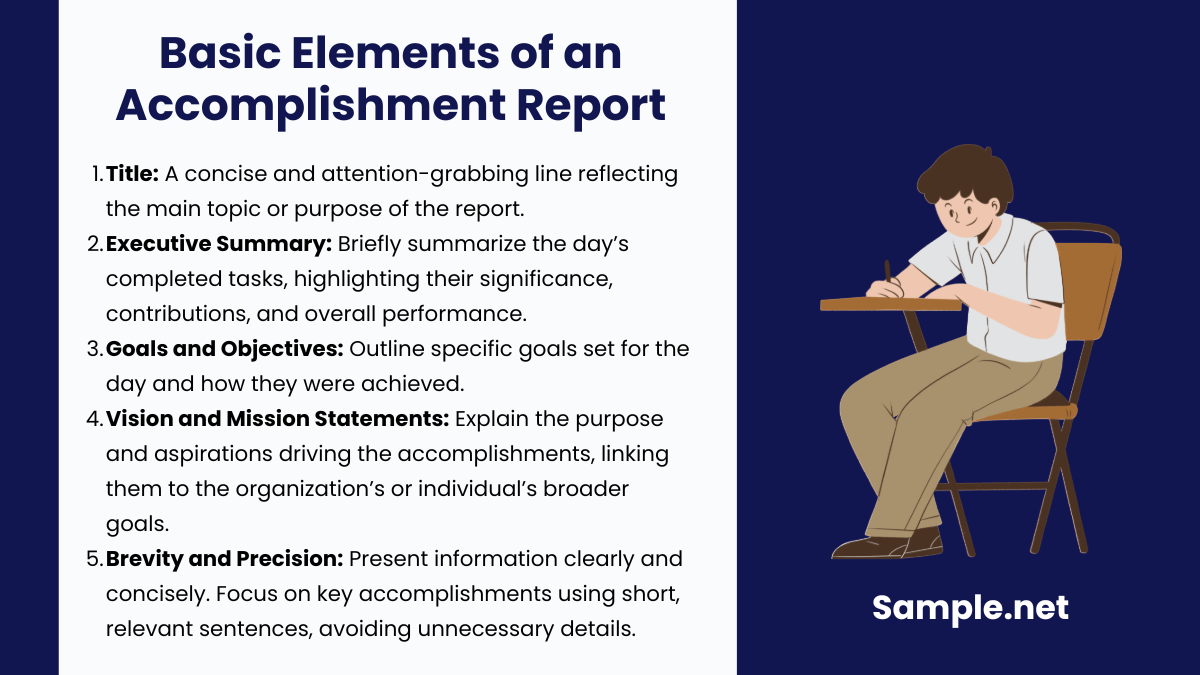
In this section, you will learn how to construct a remarkably written and well-detailed daily accomplishment report. However, a daily accomplishment report has different features. Include the following elements for you to create an impressive document:
How to Create a Daily Accomplishment Report
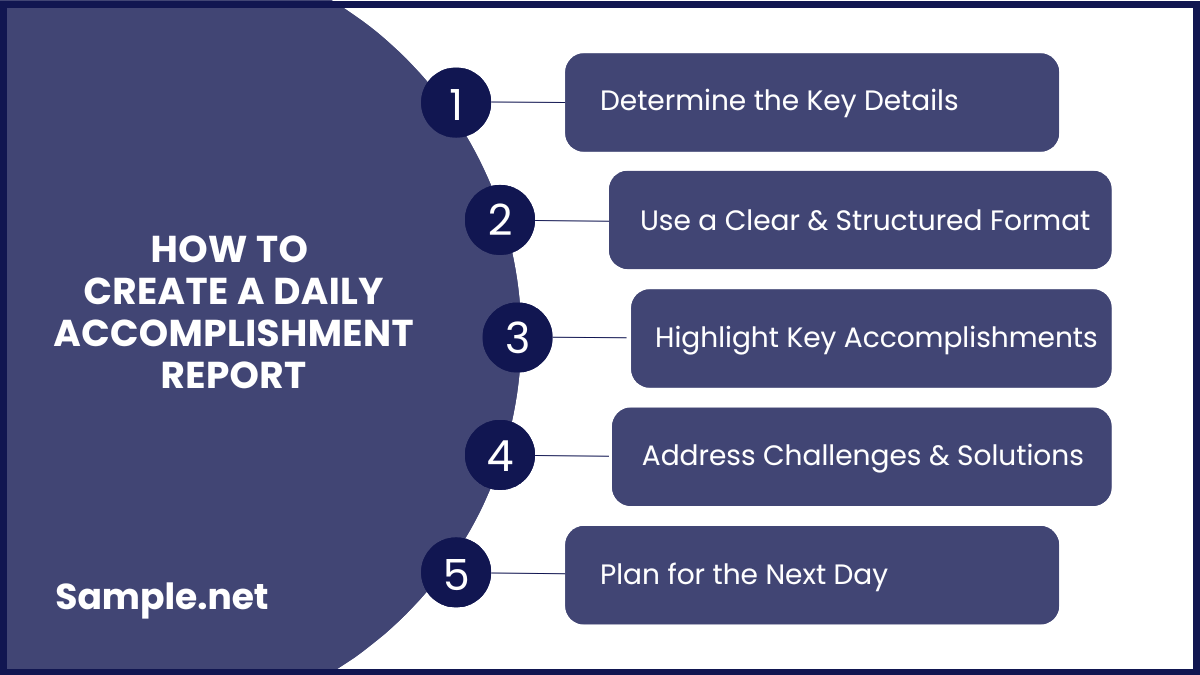
Step 1: Determine the Key Details
Start by identifying the key information that needs to be included in the report. This typically includes tasks completed, challenges faced, pending tasks, and future goals. Tailor the content to the intended audience, such as supervisors, team leaders, or colleagues. Defining key details ensures that the report remains focused and relevant.
Step 2: Use a Clear and Structured Format
Organize the report using a simple and logical structure. Begin with the date and name of the person submitting the report, followed by sections for completed tasks, challenges, and future plans. Use bullet points or headings to enhance readability. A well-structured format ensures that information is easy to understand and access. You can also see more on Annual Accomplishment Reports.
Step 3: Highlight Key Accomplishments
Focus on the most significant accomplishments of the day. Clearly describe the completed tasks and their impact on the project, team, or organization. Highlighting key achievements helps showcase productivity and progress effectively. Ensure that accomplishments are described concisely but with sufficient detail.
Step 4: Address Challenges and Solutions
Include a section for any challenges faced during the day and the solutions applied to overcome them. Be honest and constructive in identifying obstacles, as this helps in addressing similar issues in the future. Documenting challenges provides insights into problem-solving skills and enhances transparency. You can also see more on Monthly Accomplishment Reports.
Step 5: Plan for the Next Day
Conclude the report by outlining tasks or goals for the next day. Include details about pending tasks, priorities, or any resources needed to accomplish future objectives. This section ensures continuity and helps maintain focus on ongoing projects. It also allows supervisors to provide guidance or support where necessary.
FAQs
Some examples of daily accomplishment reports are personnel daily accomplishment report, daily strategic accomplishment report, daily research accomplishment report, farm bill daily accomplishment report, daily housing accomplishment report, individual daily log and accomplishment report, work from home daily accomplishment, and more.
What are some examples of daily accomplishment reports?
The purpose of a daily accomplishment report is to demonstrate the results of specific tasks and activities that are fulfilled in accord with a particular project or work every day. It displays a clear timeline of accomplished deeds made by an employee.
What is the purpose of a daily accomplishment report?
When you write your daily accomplishment report, construct a summary or overview paragraph of the accomplishments you have done for the day. Then, include the essential details of the summary. Create a clear timeline of the time period to list down all the accomplishments for the day. Use some charts, bar graphs, tables, and other visual diagrams to showcase the daily progress and accomplishments well.
What are the significant steps in writing a daily accomplishment report?
A daily accomplishment report is a document containing the completed activities, task reports, events, programs, and other things for the day involved in a certain area or field which includes at work, school, research, and many others . On the contrary, a daily progress report is a type of report that demonstrates the latest condition of a certain project or work required by the clients and supervisors on a daily basis.
What is the difference between a daily accomplishment report and a daily progress report?
What challenges might arise when preparing these reports?
Common challenges include ensuring accuracy, avoiding over-reporting, and managing time to prepare the report. To overcome these, employees should focus on key accomplishments, use structured formats, and allocate a specific time for report preparation. You can also see more on Daily Sales Reports.
How are Daily Accomplishment Reports useful for managers?
Managers use these reports to monitor employee performance, identify recurring challenges, and provide targeted feedback. They also help managers track team progress, evaluate productivity, and align tasks with organizational goals.
How do you make a Daily Accomplishment Report more effective?
Focus on clarity and conciseness. Highlight key accomplishments, be honest about challenges, and use a consistent format. Tailor the content to the intended audience to ensure relevance and impact. You can also see more on Narrative Accomplishment Report.
